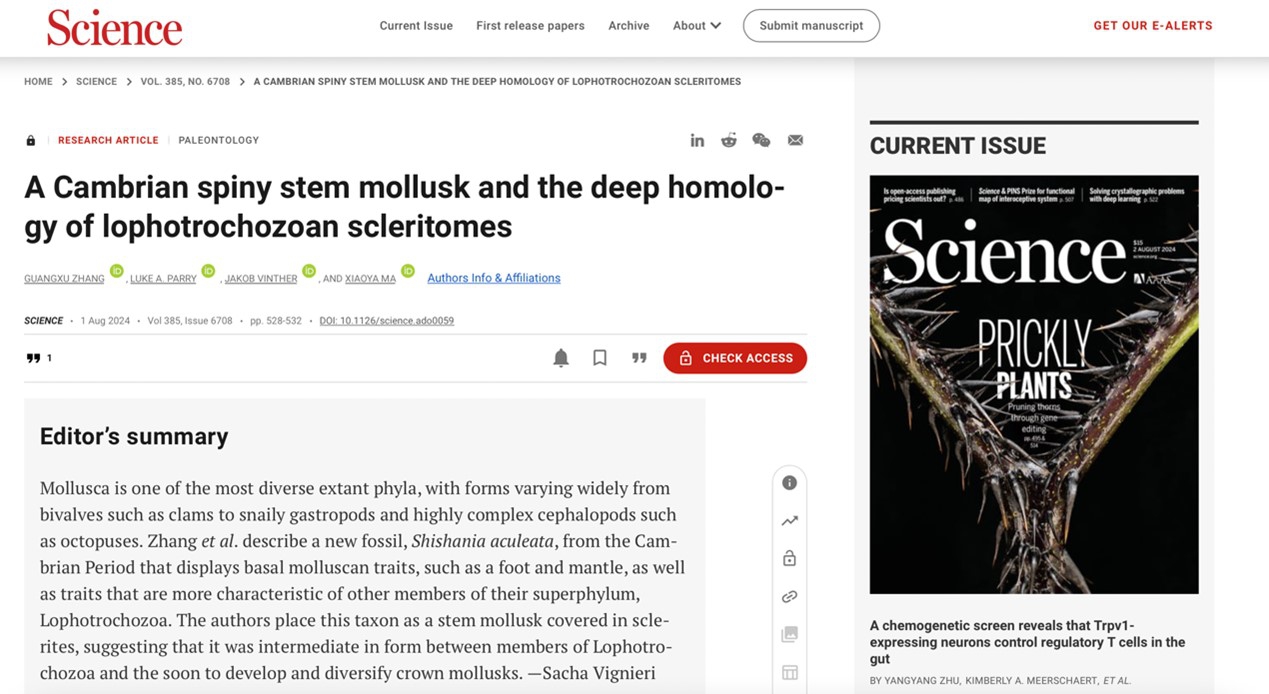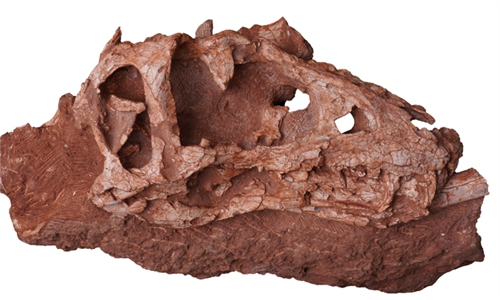Mollusk fossils from Cambrian century, 514 million years ago, discovered in Southwest China

Screenshot of the published paper (Photo: Science journal)
Scientists from Southwest China's Yunnan Province published a significant study in journal Science on Friday, unveiling the origins of Shishania aculeata, a species of mollusk existing 514 million years ago, and offering fresh insight into the early evolution and origins of mollusks, the Xinhua News Agency reported.
The specimens of the Shishania aculeata were first discovered by Zhang Guangxu, a doctoral graduate from Yunnan University, in March 2019 in Fumin county, Yunnan, according to Xinhua.
The research team analyzed the fossils, discovering that these unassuming fossil specimens were rare mollusks from the Cambrian Period that had preserved their soft carapaces and had been labeled Shishania aculeata.
The research team described a shell-less, Cambrian stem mollusk, Shishania aculeata, with conical, hollow chitinous sclerites and a smooth girdle, broad feet, and a mantle cavity.
The sclerites have a microstructure of narrow canals consistent with the impressions of chaetal microvilli found in annelids and brachiopods.
Shishania sclerites provide a morphological steppingstone between typical chaetae (chitinous bristles) and the external organic part of aculiferan sclerites that encloses a mineralized body, the researchers described.
The research team, through advanced imaging and analysis techniques, conducted studies on the internal structure of the Shishania aculeata.
They observed that its internal structure parallels some of the growth patterns of annelids, suggesting that the hard structures of different lophotrochozoa may share a common origin, according to Xinhua.
Ma Xiaoya, a co-author of the paper and fellow researcher from the Institute of Palaeontology, Yunnan University, told Xinhua that the finding of the Shishania aculeata's well-preserved anatomical structure provides significant details for appreciating the early evolution of mollusks and lophotrochozoan.
As research progresses, the team will develop a clearer understanding of the origins and early evolution of mollusks, Ma noted.
Scientists said that the finding contributes significantly to researchers' understanding of the early evolution of mollusks and enhances their comprehension of the rapid diversification of mollusks during the Cambrian explosion.
The finding also highlights the significance of the exceptional preservation of mollusks fossils in Cambrian rocks existing in Yunnan, enabling researchers to continuously uncover the origins of early animals, and delivers important clues in studying the early stages of evolution, according to the institute.
Global Times



